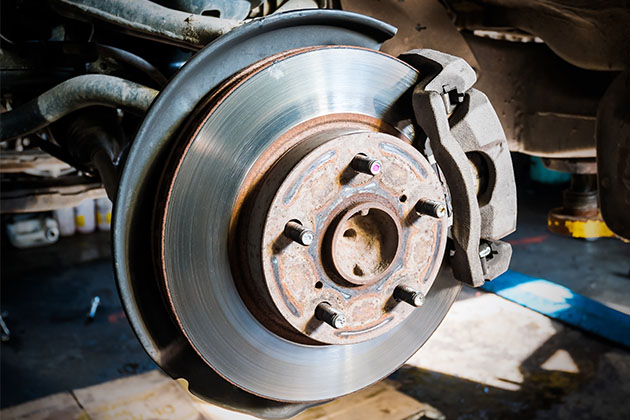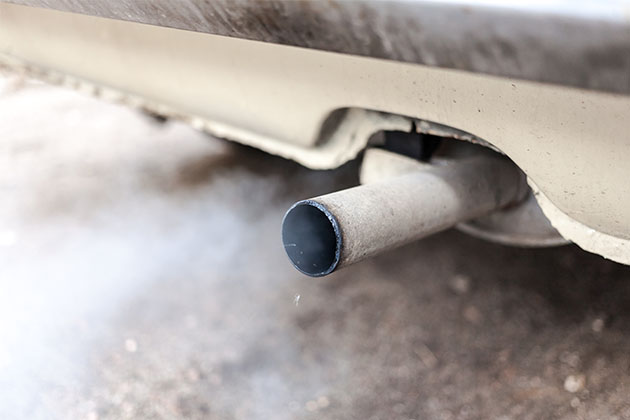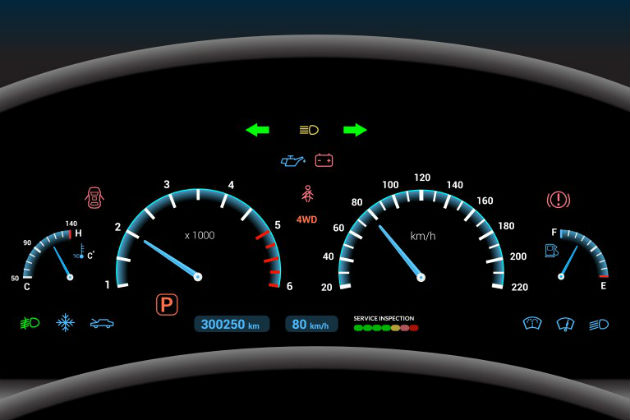Whether your car is vintage, brand new, or a well-maintained and trusted family vehicle, you’re likely to experience at least one of these symptoms over the life of your car ownership.
When your car sends warning signs that something’s not right, it’s vital that these signs are not ignored. An early fix is the smart approach, as is regular maintenance to help prevent these problems from developing in the first place.
1. Sluggish acceleration
You’re likely to know when your vehicle is being abnormally sluggish, and it could be any number of reasons.
Ensuring you’re using the correct fuel for your vehicle is important. If you use a lower octane fuel than is recommended by the car's manufacturer, you could get poor performance in the short term and serious engine damage in the long term.
Dirty air cleaners and clogged fuel injectors can also cause sluggish performance, as can general engine and transmission wear. Low tyre pressures, which increase the rolling resistance of a tyre, can slow things down and make your car's steering less responsive, too.
Again, regular maintenance can make all the difference here.
Action: Have your car serviced promptly for diagnosis and repair.
2. Noisy / squeaky brakes
Good brakes are vital, but being out of sight, they can also be out of mind. Always keep your ears open for unusual sounds when braking.
Some brake pads also have small metal tabs that cause squealing when the pads are nearly worn out, so this can also be an indication that the pads need replacing.
If squealing is due to worn brake pads or shoes, they might be causing costly damage to the rotor or drum. Squealing could also point to a defective rotor or drum surface. Remember, driving with faulty brakes is illegal, dangerous, and could lead to further mechanical damage.
Action: Drive or have the car towed to a mechanic for urgent diagnosis and repair.

3. Smoky exhaust
Smoke signals should never be ignored. They can have various causes, some minor and others a major cause for concern.
In a modern diesel vehicle, excessive black-smoke emissions may be due to poor fuel combustion caused by faulty injectors or the exhaust system. This smoke can also be a characteristic of older diesel cars.
In petrol cars, black-smoke emissions can be caused by too much fuel going into the engine due to poor tuning, a dirty air filter or a faulty electronic sensor.
More seriously, the release of blue-grey smoke could be a sign of worn engine components, such as the piston rings and/or cylinder bores.
Action: Don’t hesitate to take the car to a repairer for diagnosis and remediation before further damage occurs.

4. Smell of fuel or exhaust in the cabin
If you smell exhaust or fuel fumes, treat the situation as urgent. Exhaust contains lethal carbon monoxide, while petrol fumes are a fire and health risk.
One of the most dangerous aspects of carbon monoxide is that it is odourless.
Before you take action, consider the possibility that a vehicle on the road near you could be emitting unusual exhaust or petrol fumes. More concerning explanations for exhaust fumes include a leak in your vehicle's exhaust system, anywhere from the engine to the tail pipe.
Similarly, fuel fumes could point to a leak anywhere in the fuel system, from the tank to the fuel lines or somewhere in the engine compartment. This should be treated as an imminent fire danger.
Action: Park your vehicle safely, turn off the ignition, stand clear and seek roadside assistance.
5. Thumps and other noises
The cause of noises such as knocks, whines, rattles, hisses and clunks can be difficult to pinpoint. If the engine makes a knocking sound, in petrol engines this is most commonly a sign of either poor tuning and/or the fuel octane being too low.
Whines can emanate from a drive unit, axle, wheel bearings, gearbox, or power-steering pump.
The source of rattles could be anything in the vehicle, from the exhaust or hard fuel lines needing to be better secured to poorly fitting glass or body panels or even a kid’s toy under a seat.
The suspension, universal joints, axle, steering and engine mounts can also clunk and thump.
You could try to pinpoint a noise by test driving and visual inspection. It’s possible that there might be a quick fix, such as tightening a clamp, but a pricey diagnosis and repair is, unfortunately, just as likely.
Action: If you can’t identify the cause of the noise, take a friend for a drive for a second opinion before taking the car to a mechanic.
6. Difficulty starting
You turn the key, only to be frustrated. Click! Nothing. Or maybe the starter motor only cranks anaemically. It might even crank strongly yet still refuse to fire up. We are in a mystery zone for many motorists.
The battery may be a suspect if it is old, has loose connections or if the cranking and dashboard lighting are weak. If the cranking and dash lights are OK, and the battery and starter are exonerated, then further investigation is needed.
Other culprits can include faulty fuel or ignition systems (poor fuel delivery, faulty spark plugs or leads), other electrical issues such as faulty sensors and blown fuses, and let’s face it, an empty fuel tank.
Action: Call roadside assistance for diagnosis (and a potential new battery) or have your car towed to a repairer.

7. Excessive vibrations
Annoying vibrations can emerge from components such as the wheels, brakes, axles and engine. If you wanted to try to diagnose and solve the problem yourself, here are a few ideas: check the tyre rims for damage, nuts for tightness and wheels for wobble. If you have been off-road, dried mud on the wheels may be a cause.
Look for incorrect tyre pressure, uneven wear or separated tread.
Vibrations during braking could also be due to an unevenly worn brake rotor. Other vibration sources could include axles or driveshafts that are out of balance or damaged. Worn-out constant-velocity (CV) joints fall under the same category.
Action: Have your car serviced promptly for diagnosis and repair.
Recognise any of these warning signs in your car?
Visit one of RAC's nine Auto Services centres across Perth for a comprehensive diagnosis.
Last updated: August 2020
